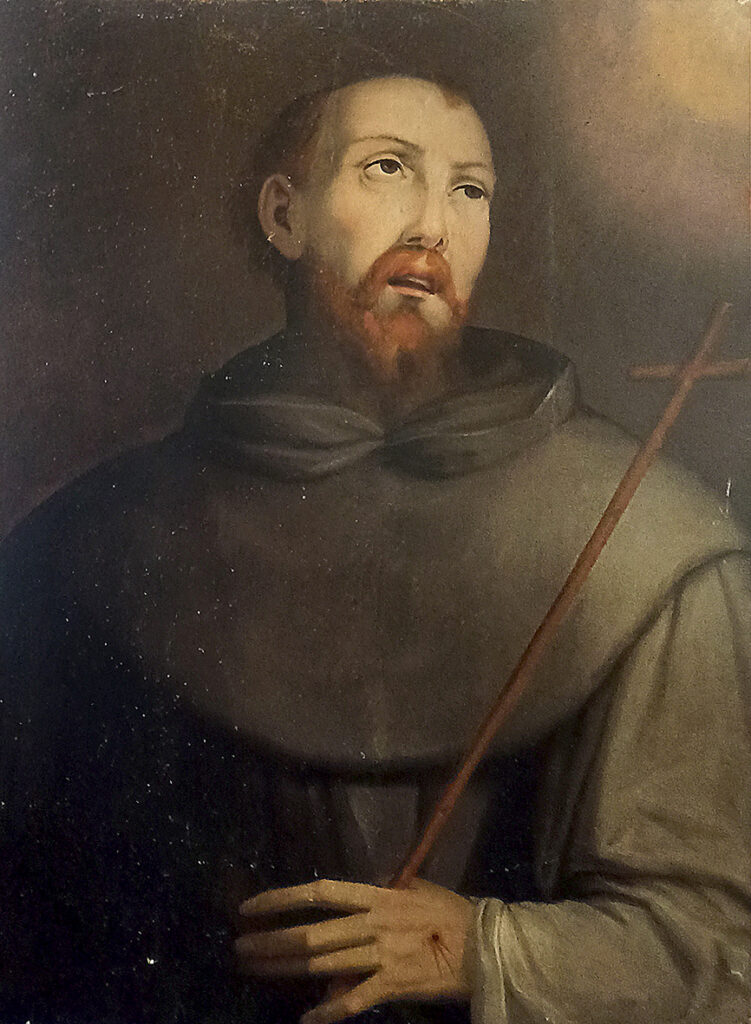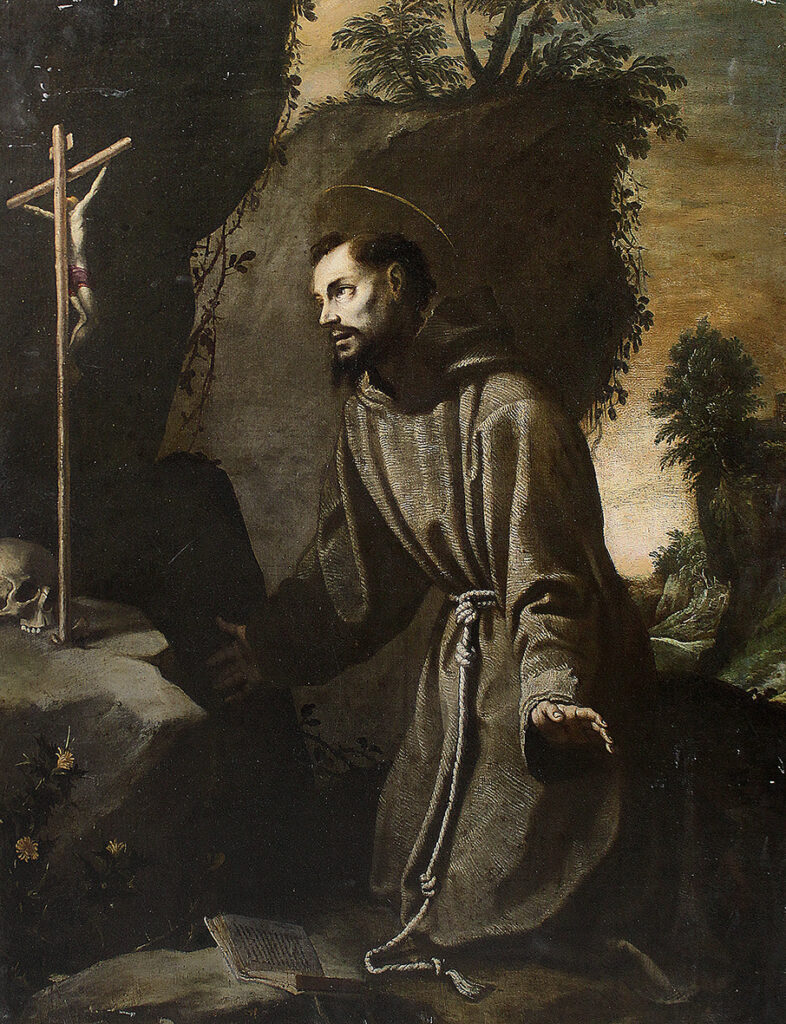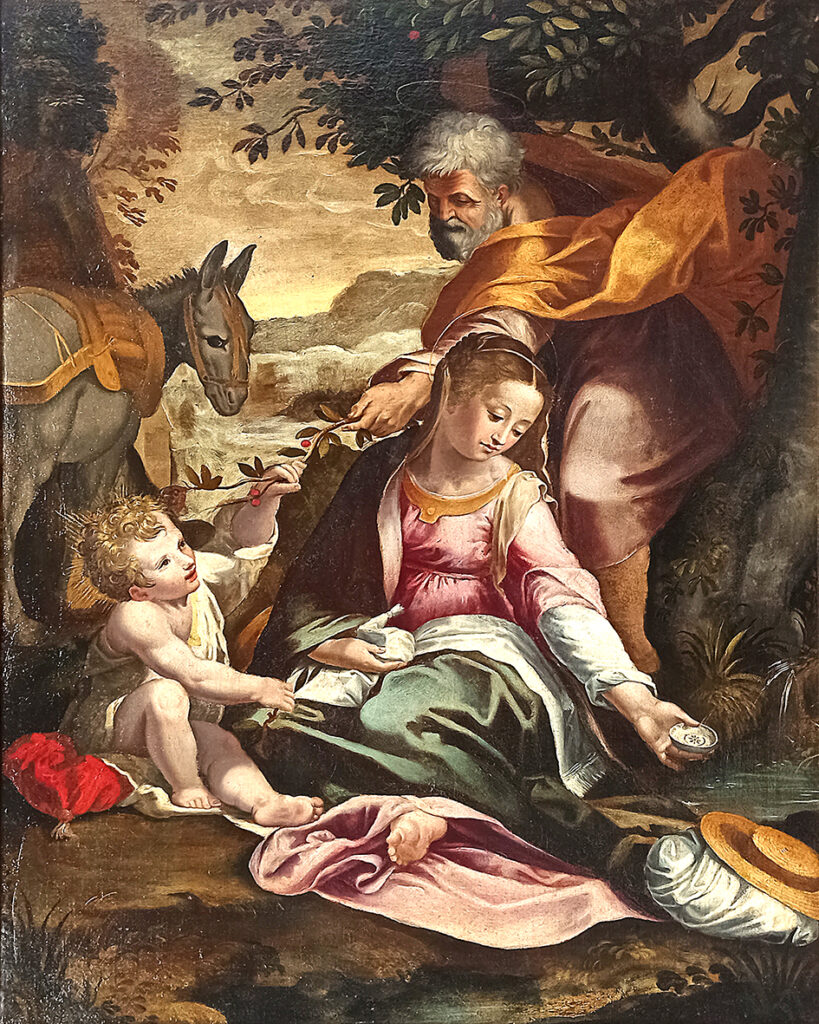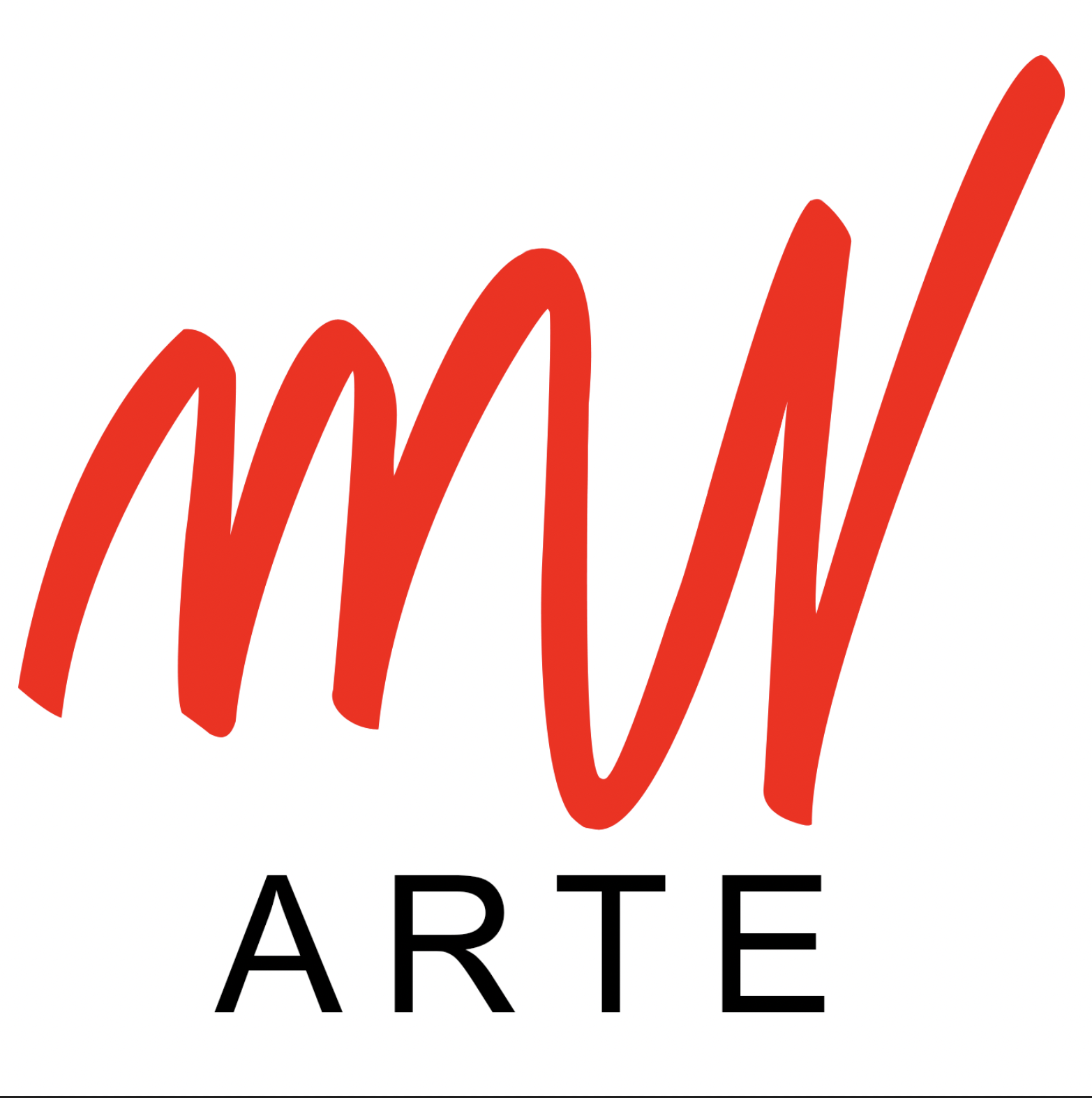


ANTICIPAZIONI CARAVAGGESCHE
La storia non è un continuo progresso ma un percorso fatto di bruschi salti e rotture; questi cambiamenti si riflettono nello stile delle opere d’arte e a volte sono così profondi da determinare vere e proprie rivoluzioni. Nel XV secolo questa rivoluzione prese il nome i Rinascimento la cui grandezza fu lo spirito di conquista che spinse l’uomo a compiere ricerche e scoperte in tutti i campi del sapere e delle arti, guardando con nuovo interesse alla natura nelle arti figurative. Caratteristiche principali di questo spirito nuovo furono l’invenzione della prospettiva, la conquista dell’anatomia e delle proporzioni nella raffigurazione del corpo umano, il ruolo eroico e grandioso attribuito all’uomo e alle sue azioni e l’imitazione dell’eleganza dell’arte classica. Nel XV secolo in Italia, in seguito alle evoluzioni storiche, iniziò un rinnovamento culturale e scientifico, localizzato nelle corti e presso i nobili, concentrandosi a Firenze, Napoli, Roma e Venezia, per poi diffondersi in tutta Europa. Gli artisti rinascimentali italiani studiano la prospettiva e la rappresentazione dello spazio che si costruisce fissando prima di tutto il punto di vista dell’osservatore, a cui tutti gli elementi sono subordinati; l’uomo li osserva, li studia e li governa. Il bisogno di stabilire regole fra le parti, per ottenere l’armonia dell’insieme, si traduce anche nello studio delle proporzioni. È dal punto di vista dell’uomo che lo osserva che il mondo circostante deve essere illustrato. Così gli artisti del Rinascimento esplorano l’anatomia e la natura, con l’impressione di assistere sempre, anche in scene sacre, ad una sacralità che nella natura si risolve, ma anche con l’idea che la rappresentazione dell’umano non sempre coincide con il forte e bello, ma che la natura e l’arte possono conoscere anche il brutto, il vecchio, il deforme. La riforma protestante definitivamente condannata dal Concilio di Trento nel 1561, produce profondi riflessi in campo artistico. In Italia, sede per eccellenza della cattolicità, le tesi del concilio in materia d’arte per il popolo, danno vita ad una vera e propria arte della controriforma, specialmente nell’ambito pittorico, essendo la pittura il più diretto elemento mediatico di avvicinamento del popolo al credo religioso. Alla pittura più elitaria del primo Rinascimento, succede così la richiesta di dipinti religiosi con messaggi estremamente fruibili, in uno stile più pudico, meno sfolgorante, con abbondanza di esempi di interventi miracolosi ed episodi di santa carità, che ribadiscano il culto cattolico dei santi e il valore di redenzione delle buone azioni, in contrapposizione alle eretiche dottrine riformiste. Ma, al tempo stesso, la controriforma particolarmente attiva a Milano, sia per la posizione geografica, confinante con paesi divenuti protestanti, sia per l’attiva opera di Carlo Borromeo, favorì il processo di progressivo abbandono del principio rinascimentale dell’arte come rappresentazione del verosimile, come idealizzazione del reale, per lasciare spazio all’idea che l’arte deve avvicinarsi alla realtà in modo più naturalistico e immediato. Partendo dal manierismo si può abbozzare una genesi del barocco (necessariamente generica, data la complessità dei fenomeni che il termine sottintende) come rinnovata sensibilità alla natura, al di là di stili e forme predeterminati, di cui la crisi manieristica aveva rivelato l’usura, attraverso la ripetizione di moduli ormai esausti. La crisi estetica e conoscitiva del manierismo, quella religiosa e politica della Controriforma stimolano a una critica dall’interno ai canoni classici e a forme di espressione che rivalutano sentimento e apparenza: non si indaga più la ratio della natura e delle forme, ma si pone un nuovo rapporto emotivo e formale tra l’uomo e le cose. Per questo sostanziale rinnovamento ci si varrà di tutti quei diversi mezzi che una tecnica abile fino all’illusionismo mette a disposizione dell’artista barocco.
CARAVAGGESQUE ANTICIPATIONS
History is not a constant progress, but it’s a path that includes abrupt jumps and interruptions; these changes are reflected in works of art’s style and are sometimes so profound that they determine authentic revolutions. In the Fifteenth century this revolution was named Renaissance and its greatness was the spirit of conquest that pushed people to research and to achieve discoveries in every branch of knowledge and art, as they looked at figurative arts with a renewed interest. The main characteristics of this new spirit were the invention of perspective, the conquest of anatomy and of proportions in the depiction of the human body, the grand and heroic role given to human beings and their actions, the imitation of classica! art elegance. As a consequence of historical evolution, in the Fifteenth century in ltaly there was a cultura! and scientific renewal, localised in Courts and in aristocratic circles, initially in Florence, Naples, Rome and Venice and then throughout Europe. ltalian Renaissance artists study perspective and the representation of space, which, first of all, is built by identifying the observer’s point of view to whom all the elements are subordinated: man observes them, studies them and controls them. The need to establish rules among the parties to obtain an overall harmony is also translated into the study of proportions. lt is from the point of view of the observer that the world must be shown. In this way Renaissance artists explore anatomy and nature, with the constant impression to witness, even in scenes with a religious subject, a sacrality that finds a resolution in nature, but also with the idea that representation of what is human doesn’t always coincide with strength and beauty, but that nature and art can also acknowledge ugliness, old age and deformity. The Protestant Reformation, condemned in a definite way by the Council of Trent in 1561, has a deep impact on art. In ltaly, the centre of Catholicism par excellence, the instances of the Council with regard to “art for the people” start a real Counter-Reformation art, especially in the field of painting, as it is the most direct mediatic tool to bring people nearer to religious beliefs. After early Renaissance more elitist painting, there is a demand for painting with a religious subject and with extremely readable messages, in a more chaste, less flamboy ant style, with a wealth of examples of miracolous divine intervention and episodes of holy charity, whose role is to reinstate the Catholic worship of saints and of redemption through good deeds, in contrast with Reformation eretica! doctrines. At the same time, however, the Counter-Reformation, particultarly active in Milan, both because of its geographical proximity with countries that had become Protestant and because of Carlo Borromeo’s work, eased the process of progressive abandonment of the Renaissance principle of art as verisimilitude, as idealisation of reality, to substitute it with the idea that art has to be brought near reality in the most naturaliste and immediate way. Starting from Mannerism we can identify the birth of Baroque (necessarily approximate given the complexity of phenomena that the term implies) as renewed sensitivity towards nature, beyond predetermined styles and shapes, whose end was revealed by the crisis of Mannerism, which kept repeating liveless modules. The aestethic and cognitive crisis, added to the religious and politica! crisis of Counter-Reformation, stimulate criticai attitudes towards classica! rules and expressive modes that reappraise feelings and appearance: the accent is no longer on the investigation of nature’s and shapes’ ratio, but on the creation of a new emotional and representational relationship between Man and Things. AII these different aspects of this technique, so refined that it resembles illusionism, will be utilised by Baroque artists in order to achieve this substantial change.
